Table of Contents:
- Discover How to Use Acrylic Paint
- What It Takes to Get Started
- Grades of Acrylic Paints
- How They Work
- What About Surfaces
- Oil vs Acrylic
- Cleaning Up Spills
- Recommendations
Discover How to Use Acrylic Paint
It’s hard to believe that acrylics didn’t come into being until the mid-20th century. They have become such an integral part of the artmaking process for so many artists, we take for granted that they are a relatively “new” medium. Before they were developed, painters used oils or watercolors. But, it was a common desire to wish there was a paint that had the creaminess and shorter drying times of oils and the easy clean up of watercolors. Around the 1950s, artists got their wish. These new paints were formulated by suspending pigments in an acrylic polymer emulsion and acrylic paints were born! Needless to say, this modern medium altered the way many artists painted and opened new possibilities for creating never-before-seen art.
Acrylics offer so many benefits for both beginner and veteran artists. They feature the buttery, nontransparent quality of oil paint, yet take very little time to dry. Plus, you can use water in place of smelly, toxic solvents to thin, allowing painters to use methods that make watercolor paintings so luminous. It’s like getting two for one!
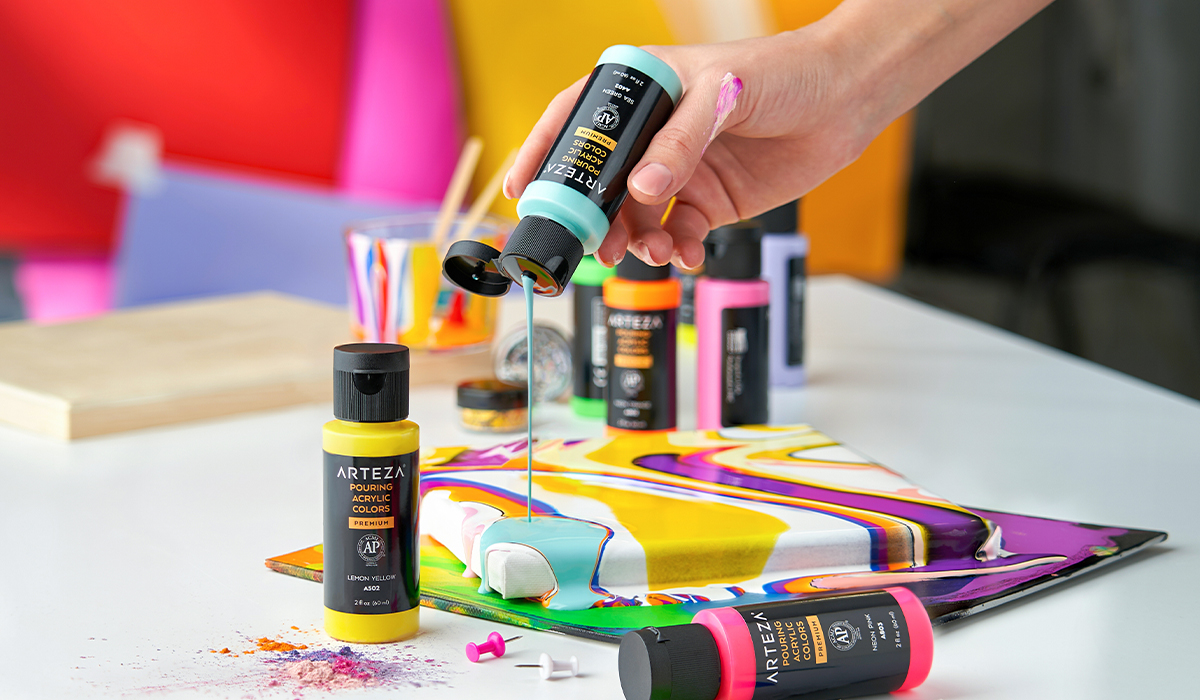
What It Takes to Get Started
Getting started is super easy. Just grab some paint, a couple of brushes, something to paint on and water and you’re ready to go!
Paint
A set is a good way for beginners to start as they take the guesswork out of deciding what colors to buy. Over time, you’ll find yourself leaning towards the same hues, which you can replenish as needed with separate tubes. Sets are pretty popular because you get white and black, plus the basic primary colors—blue, red, yellow—with which you can mix just about any color you can think of.
Paintbrushes
Stiff-bristle brushes work best with this medium, but softer ones can be used, particularly if you’re watering down the paint to accomplish watercolor effects. There are several shapes— round, square and oblong. They also come in various sizes, with wide brushes good for covering space all at once down to thin detail brushes for the more delicate and intricate detailing.
Surface
The beauty of acrylics is that you can use them on almost any surface. If you’re prone to using thick strokes or doing impasto work, then wood panels and stretched canvas are the way to go. For creating art with thinner paint, a nice thick watercolor paper will do. We’ll go into more detail about surfaces later in this article.
Palette
To mix your paint, you’ll need a palette of some sort. Many artists prefer to use a wood or acrylic palette that they can easily hold as they stand in front of an easel. Others use stationary palettes placed on a table beside them as they work. Another handy option is disposable palettes that have glossy paper in a glue-bound pad. After your painting session is over, you can tear off the sheet you’ve used for paint mixing and toss in the trash. This makes clean up easy and you always maintain a clean palette.
Water
To thin your paint, you will need a cup of water. Some artists keep two cups of water—one for cleaning the brush and the other for paint mixing. This way they are always using clean water to get the purest colors they can.
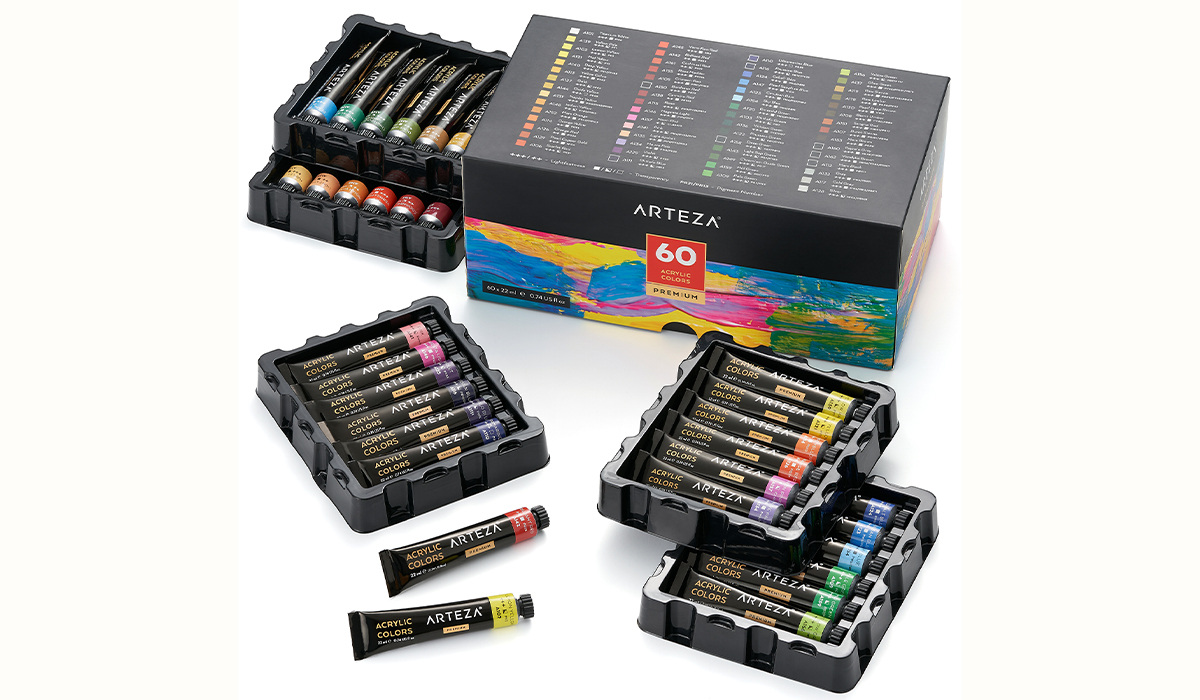
Grades of Acrylic Paints
You can choose from student- or professional-grade paints. Student-grade paints contain more filler and not as much pure pigment as professional grades. Although they are less expensive, you sacrifice some of the brilliancies by using them. To offer you the vibrant colors you’re looking for at an affordable price, Arteza offers acrylics of premium quality that are suitable for all levels. These paints are highly pigmented for colors that are rich and bright. They are also fade-resistant so you never have to worry about the colors diminishing with time. If you’ve bought other brands in the past that you may still have, no worry, as acrylic paint brands can be mixed with one another and still maintain their color.

How They Work
This is an extremely versatile medium. You can use this paint straight from the tube, with no need to add anything to create a buttery consistency. When used this way, you will get a highly opaque color great for blocking over previous colors and creating even and solid layers.
With just a dab of water, you can take this paint from solid to transparent. You can work wet-on-wet (wet paint on a wet area) or wet-on-dry (wet paint on a dry area), just as you would with watercolors and get similar effects. You can create soft and hard edges along with luminous glazes.
If you’re just beginning, making swatch charts—going from thickest to thinnest to see how each color looks and acts after differing amounts of water have been added—is a beneficial exercise. Once done, you’ll have a better feel for how the paint works and the consistency you like best.
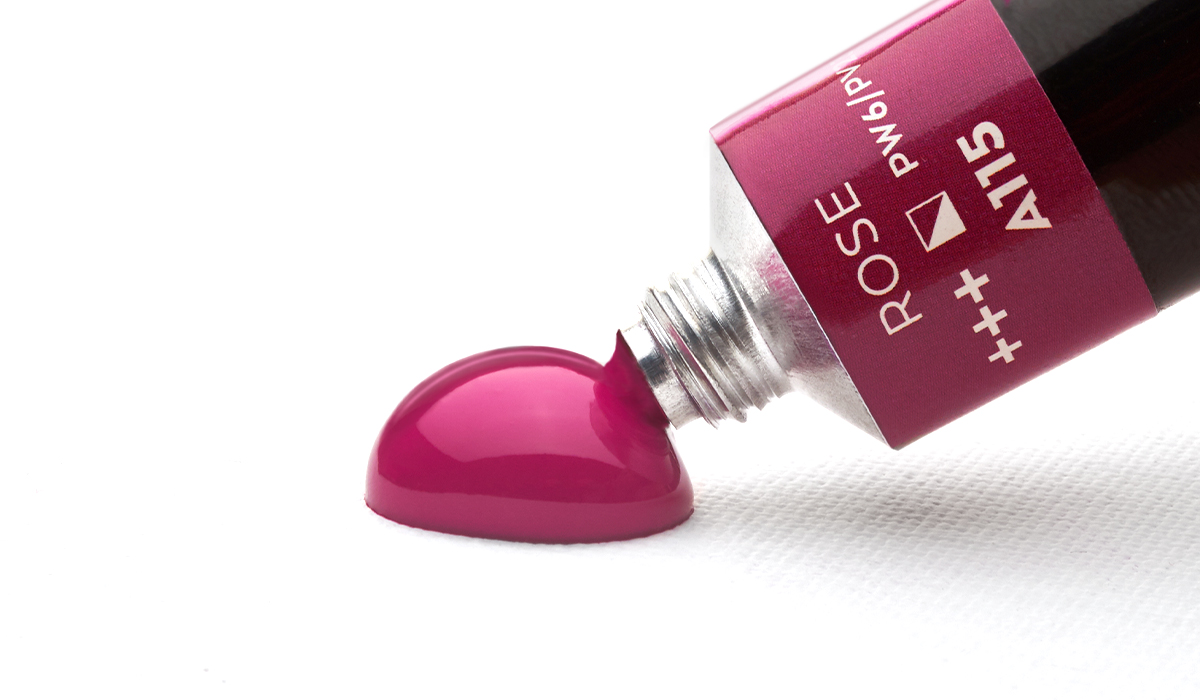
What About Surfaces
As mentioned before, acrylic paint can be used on a wide spectrum of surfaces. For fine artists, canvas and heavy paper is the preferred choice. Crafters use it on their wood, plastic, clay and metal crafts. Since the base is a polymer, it dries to a hard, plastic-like condition. This makes for a long-lasting paint that can withstand a lot.
Canvas
A stretched and pre-primed canvas is the most popular surface for acrylic painting. The strength of the canvas can take the deep and sculptural quality of impasto as well as the multiple layers necessary for creating depth and shadowing. Canvas boards are great for students and beginners as they offer durability without the higher cost of a stretched canvas.
Paper
The best paper to use with acrylics is high-quality watercolor paper. This comes in heavier weights than regular drawing paper, which prevents buckling or warping once the paint is applied. Paper that is 140lb (300 gsm) or higher is ideal.
The texture of the watercolor paper is determined by the drying and pressing procedure used during the papermaking process. Hot-pressed paper has a slightly textured surface that can add a softer appearance to your work. Cold-pressed paper has a slicker surface that can help define the edges or details of a subject. If you’re looking for the most coarseness you can get, you might want to try rough or handmade papers.
Wood Panels
More and more painters are choosing wood panels as their surface of choice. You can get them either pre-primed or unprimed. The pre-primed panels are ready to use, while the unprimed will need a coat of primer to prevent the wood from absorbing the paint. Painting on bare, unprimed panels has the advantage of adding another visual element to your work with the wood grain showing through, enhancing the subject or scene.
For artists who work in impasto, using dollops of paint applied with a palette knife, wood panels are a perfect support. Many crafters like to use wood slices for making coasters and other home decor items as well as Christmas tree ornaments. Acrylics work well for this, too!
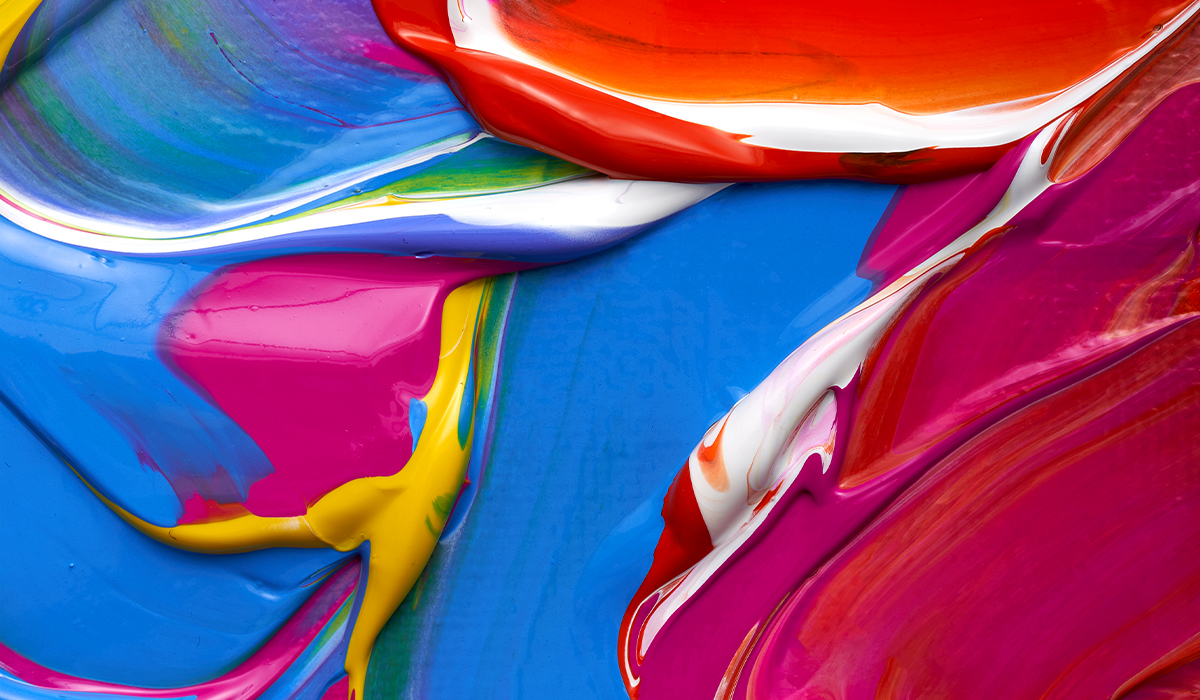
Oil vs Acrylic
One of the most common questions posed about acrylics is exactly how they differ from oil paints. Here are a few of the differences.
Drying Time
Acrylics are a fast-drying paint, usually taking just 15 minutes to an hour to be completely dry, while oils can take days or even weeks. If you’re a quick painter or one who likes to paint on location and doesn’t want to worry about damaging wet paintings in transit, acrylics are a great option. They also alleviate the challenge of storing wet canvases.
For painters who like to paint slowly and come back and make changes, the slow-drying time of oils allows this. Also, this means you can leave your paint on the palette and come back later on and still have the ability to mix your paints.
Colorfastness
Acrylics dry somewhat darker, while oils don’t. Oil paintings may fade over time, while acrylic ones won’t.
Water or Solvents
If the smell of solvents bothers you, then oil painting may not be your cup of tea. They require you to use chemical-based products to thin your paint and clean your brushes. It is always a good idea to paint with them in a well-ventilated area.
On the other hand, acrylics only require water for thinning and cleaning. This means no smell and less toxicity, making them safe for children to use.
Cleaning Up Spills
The secret to cleaning up after you’ve spilled some paint is to act fast. It’s pretty easy to clean up wet acrylic spills, just wipe up the excess paint and use a wet rag to get the remainder. You might have to rinse out your rag a few times, but eventually all the paint will be removed.
If the paint has already dried it can be a little trickier. To clean up dried spills on carpet or clothes, use something with a rigid edge, such as a credit card or butter knife, and gently scrape the paint off. Then apply soapy water and gently rub until the stain is gone. Rinse with fresh water.
To get dried paint off glass surfaces, you might need to use a razor to lift the dried paint, being especially careful not to scratch the glass. Once the surface is clear of paint, use a glass cleaner to restore the shine.
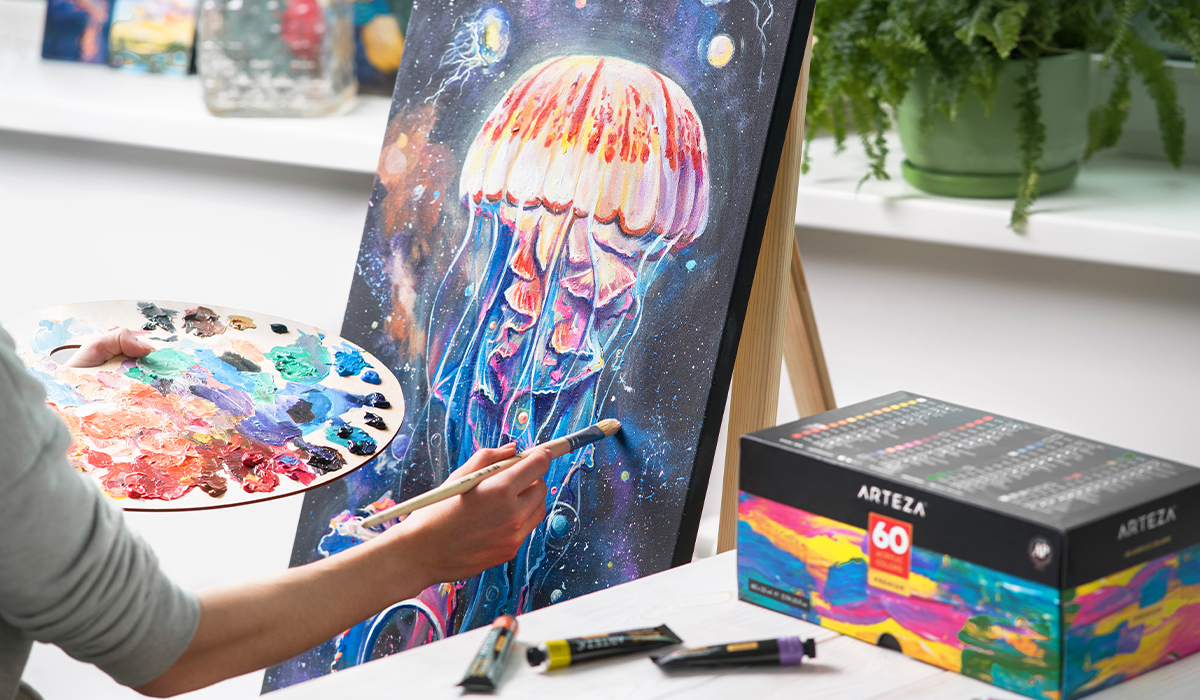
Recommendations
- You can use a dry brush or a wet one and get different results. Experiment using a dry brush dipped in paint before applying to the canvas, or by dipping your brush in water first and then applying the paint.
- See what happens when you paint on a wet canvas versus a dry one. Using your largest brush, cover the surface with clean water. Next, apply the paint and watch!
- Try using one color to create a value swatch card. Draw a grid and starting with pure color in the first block, add a tiny bit of white to that color and paint in the next block. Keep doing this until you have filled the grid. This is a good way to see all the value (light-to-dark) changes you can get with just one color.
- The best way to get better at painting is to practice, practice, practice. Even if it’s just 15 minutes a day, you’ll see improvement in no time!
Now that you have all this information about acrylic paints, we hope you’re motivated to give them a try. No matter if you’ve never picked up a paintbrush or you’re a seasoned oil painter or watercolorist, it’s worth the time to sample this multifaceted medium.
We’d love to hear how you feel about acrylics, so leave us a note in the comments below.

















4 comments
At this time, we have not tested the acrylic paints on silk screens. If you do try this, we recommend doing a small patch test first. Feel free to share your results with us as well!
At this time, we have not tested the acrylic paints on silk screens. If you do try this, we recommend doing a small patch test first. Feel free to share your results with us as well!
At this time, we have not tested the acrylic paints on silk screens. If you do try this, we recommend doing a small patch test first. Feel free to share your results with us as well!
Can I use acrylic medium with my silkscreens. If so do I still need to heat set them to enable washings on various fabrics.